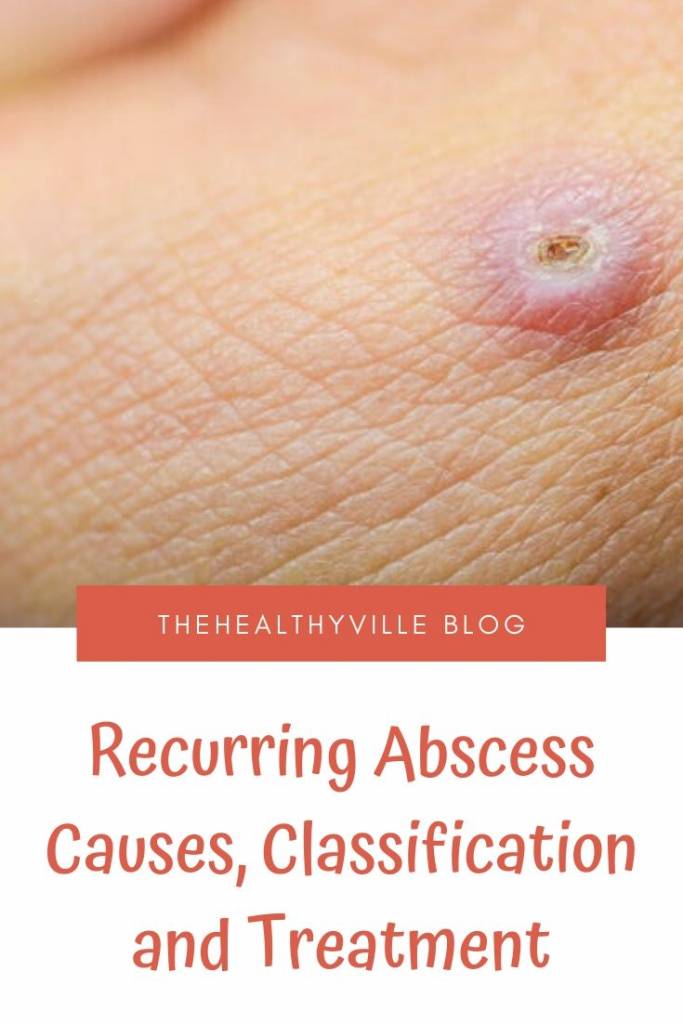Learn the recurring abscess causes, see how they are classified and know how to treat them before complications and further damage occurs.
Abscesses are a cavity in which pus can accumulate, which is the mixture of blood cells, dead tissue and germs. They have the capacity to develop in almost any part of the body.
Pus forms during the process that the immune system follows when fighting an infection. When white blood cells are directed to an infected area, they accumulate inside the injured tissue thus causing inflammation.
Generally, viruses, bacteria, parasites or ingested objects are what lead to the formation of abscesses. When these appear on the skin, they are usually easy to detect because they present as swollen, reddened and painful areas.
However, if they develop within the body they are not usually obvious and cause injuries to organs, such as the brain, lungs or others. Treatments for these situations include drainage and taking antibiotics.
Causes and classification of abscesses
Abscesses occur when an area of tissue is infected and the immune system fights it. In this way, white blood cells move through the walls of blood vessels reaching the area of infection. Once there, they accumulate inside the damaged tissue.
During this process pus forms. Abscesses may develop as a result of recent surgery. They can also form due to side effects of an infection, such as appendicitis.
Abscesses are usually classified according to the place of the human body in which they develop. Thus, we mention below some of the most common:
- Amebic and pyogenic liver abscess.
- Anorectal abscess.
- Bartholin cyst.
- Skin abscess in abdomen or pelvis.
- Dental abscess.
- Cerebral, of the spinal cord.
- Peritonsillar and retropharyngeal abscesses.
- Pancreatic lung abscess.
Recurring abscess treatment
First of all, in the treatment of recurring abscess it is essential to avoid touching it. Likewise, professionals recommend the use of warm compresses in the cure.
If the basic treatment does not work or the infection worsens, the doctor may have to drain it or it may be necessary to treat it with drugs.
Professionals perform the percutaneous drainage of an abscess in order to extract the infected fluid from the body. This fluid is usually located in the abdomen and pelvis, but it can also appear in the chest or other parts of the body.
The goal is to place the needle or catheter through the skin inside the abscess to get a sample of the infected fluid from an area of the body. Subsequently, a small catheter is left positioned so that the abscess fluid can be drained.
The process can take several days. This option offers a faster and more efficient recovery than open surgery drainage. It is a minimally invasive process.
The percutaneous abscess drainage process uses imaging guidance, that is, through techniques such as ultrasound or fluoroscopy. It is usually intervention radiologists who develop it.
Surgical drains in the operating room are focused on treating abscesses that cannot be removed through percutaneous drainage.
Considerations
It is important to be clear that abscesses can develop both in the most superficial layer of the skin, and under it. As well as in a tooth or even in the deepest part of the body
When they appear on the surface of the skin, the infection usually has the appearance of an uncured wound. Instead, under the skin, it may appear as an inflamed lump.
The area can be painful and sensitive. In the most severe cases, the infection can even cause fever and chills to the patient.
It is worth mentioning that children are prone to the recurring abscess. This is because, in a generic way, they do not wash their skin well or maintain good care of their cuts and wounds.
In this way, debris inside the wound, such as sand or clothing fibers, causes these abscesses. Exactly the same as with irritated hair follicles.
Don’t forget to SHARE the recurring abscess treatment options with your friends and family on your social networks!

